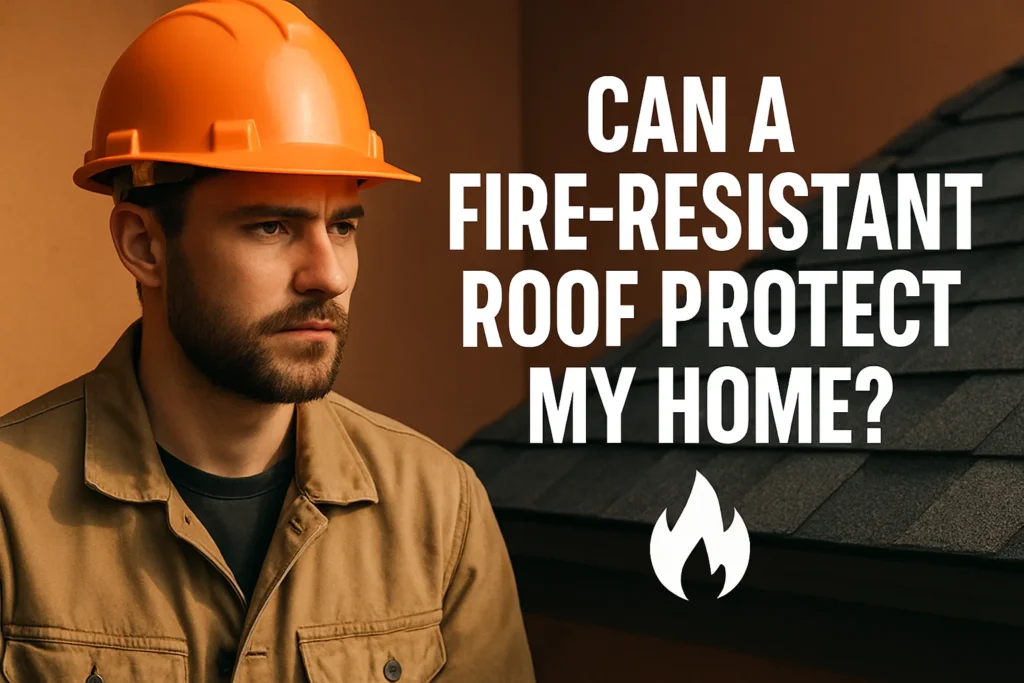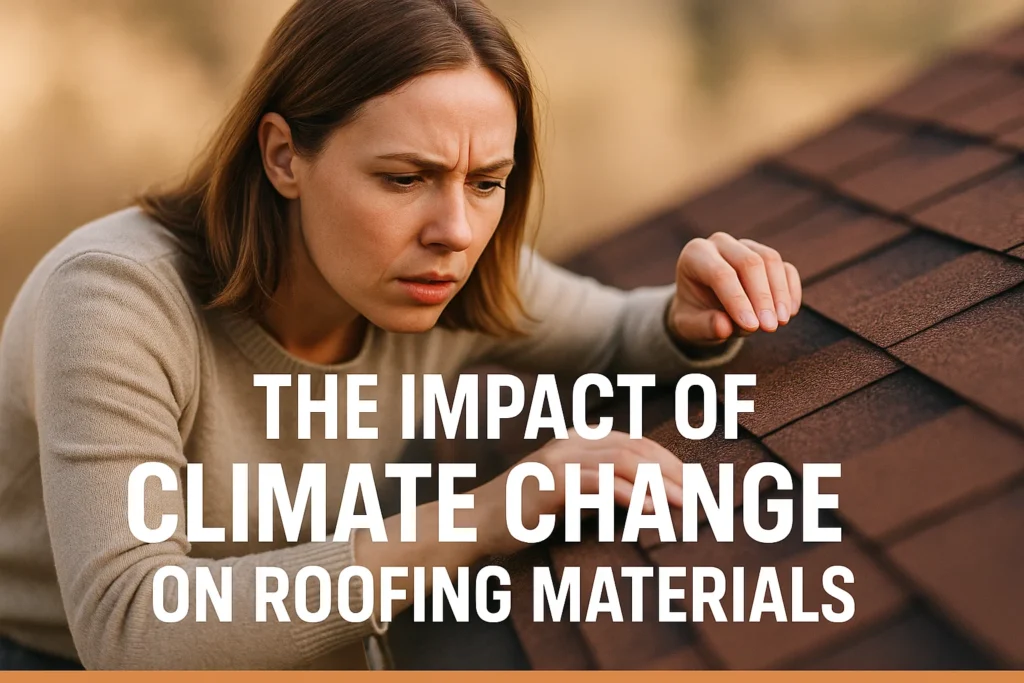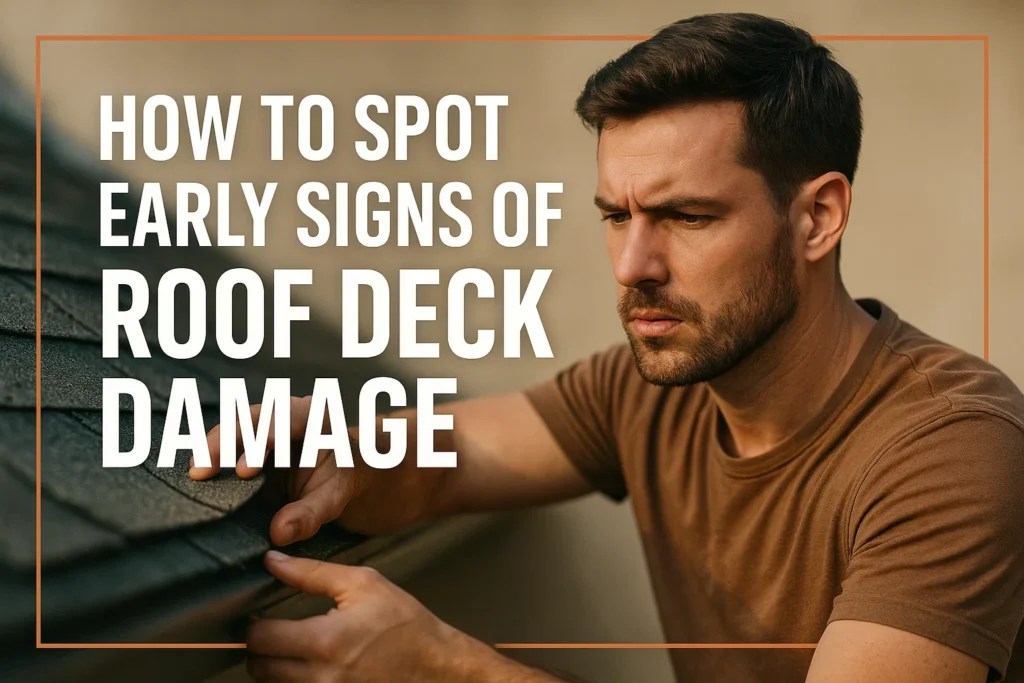A fireproof roof is a very important component of home safety. It prevents flames, sparks and heavy heat from getting into your home. As there is the risk of wildfires and accidental fires, understanding what fireproof roofing is can be useful in saving your family and property. The article describes the concept of fireproof roofing, the materials used, and the life-saving advantages of fire-resistant roofs.
What is Fireproof Roofing?
Fireproof roofing entails the use of materials and systems that are resistant to ignition and prevent the fire from spreading to the lower building. These roofs serve as a protective cover, which helps prevent fire risks on the structure. Characteristic fireproofing materials are metal, clay tiles, concrete, and slate- each of which is characterized by high resistance to fire.
Fireproof roofs are unlike fire-resistant roofs, which can withstand some heat but not absolute protection, as fireproof roofs are of high safety requirements and usually have a Class A rating, which is the highest possible. This rating implies that the material would not ignite when placed in the presence of severe fire or allow the fire to spread.
The Role of Fireproof Roofing in Fire Safety
Fireproof roofing system normally consists of a fire-resistant roof underlay and correct installation procedures that cover areas of weakness and cracking, contributing to increased protection. The option of fireproof roofing also provides an additional layer of defense, particularly where wildfires are common.
The initial defense against fires is fireproof roofing. It avoids flames and embers igniting the home by using ignition-resistant materials and high-temperature-resistant materials. It restricts the spread of fire, ensures that the structural integrity of the building is not compromised, and ensures that the loss of the building is not catastrophic.
During wildfires, airborne embers and radiant heat threaten homes. Fireproof coating is non-combustible, preventing the ignition of the roof by these embers. Their construction limits the absorption of heat and spreading of fire, which serves as a protective measure against wildfire damage.
Best Fire‑Resistant Roofing Materials
The correct material is important to use when resistance to fire is paramount. Class A is the maximum level of protection, which means that a roof can withstand extreme exposure to fire, which does not ignite or cause the flames to expand. The best Class A materials are:
1. Metal Roofs
Metal, such as steel, aluminum, zinc, copper and tin, is naturally non-combustible and frequently meets Class A requirements. It is light, durable and best suited for the wildland-urban interface and in extreme weather.
2. Clay and Concrete Tiles
Both of those types of tile are non-combustible, can reach Class A ratings, and provide long-term protection. They weigh more than metal roofs, possibly require extra framing, but they offer a unique aesthetic appearance.
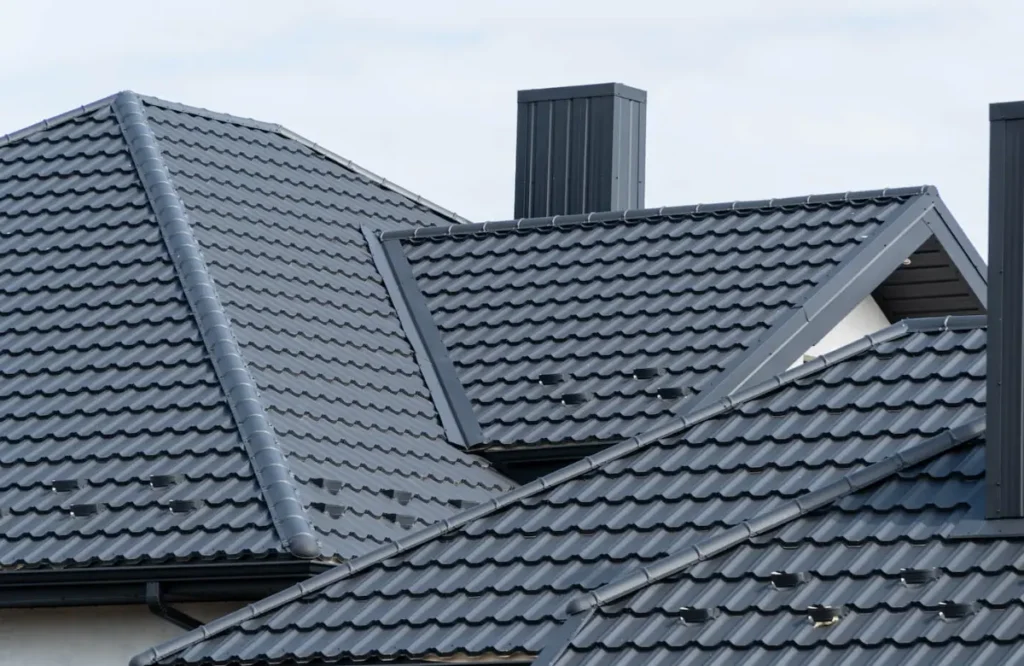
3. Natural Slate Roofs
Slate tiles are made of stone and are resilient, timeless and completely flame resistant. They are economical and an ideal fireproof option because of their weight and cost in historic or high-end homes.
4. Asphalt Shingles
Fiberglass-reinforced asphalt shingles and a large number of regular asphalt shingles are rated Class A. Although not incombustible, the modern shingles can be used to avert ignition and propagation when they are covered with fire-resistant underlayments.
5. Synthetic Roofing
A high-end synthetic shingles look like wood, slate, or tile and incorporate fire-retardant chemicals. They are portable, are designed in bendable shapes, and are getting more popular because of the combination of fashion and safety.
6. Other Commercial Roofing Materials.
Fire-resistant membranes that are commonly demanded by commercial buildings include thermoplastic olefin (TPO), modified bitumen and fiber cement. These materials are of commercial quality, which is safe and offers fire protection.
7. Choosing the Right Roof
Balance fire resistance with cost, weight, and style. Get a professional roofer to give you advice on the material that is in line with the local fire code and the requirements of your property.
Installation of Fireproof Roofing
Roof Deck Preparation
Begin with the roof deck: wipe dry and make certain it is in good structural condition. This base helps the fire-protective layers and averts possible issues in the future.
Applying Fire‑Rated Underlayment
The initial protective layer should be to install a fire-rated underlayment or cap sheet over the deck. This is a non-combustible fire-resistant system enhancement.
Installing Primary Fireproof Roofing Material
Install the primary material, that is, metal panels, tiles, slats or fire-resistant shingles, with caution. Close seams to exclude the intrusion of embers, which is a typical cause of fire.
Add Flashing and Sealants.
Install fire‑resistant flashing, vents, and sealants around roof edges, joints, and penetrations. These intimate sealing points keep an unbroken protection line.
Final Inspection and Compliance
Once it is installed, perform a full inspection to ensure that all the parts conform to the rules of the manufacturer and local building standards. Safety and life are optimized during proper installation.
How Fireproof Roofing Works
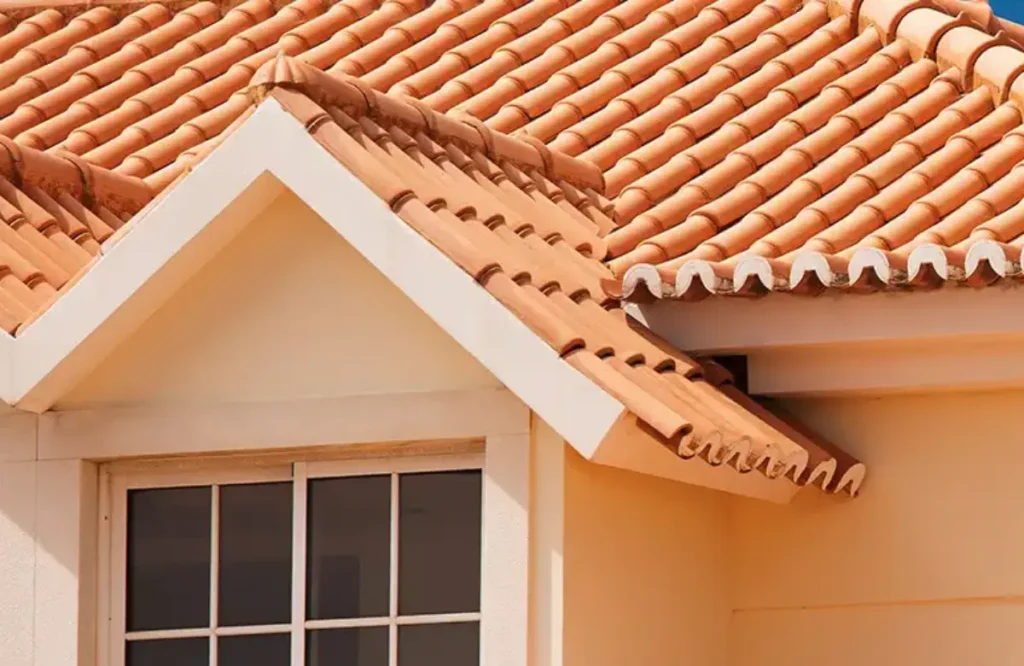
Fireproof roofing, when installed properly, prevents ignition, retards the spread of a fire, and safeguards the building structure. It is a combination of non-combustible materials and compact construction to protect from the heat and embers. Such a stratified solution minimizes the risk of fire destruction and improves the safety of occupants.
Is Fireproof Roofing Good for Your Home Protection?
Pros
- Increased Fire Resistance: Materials are resistant to ignition and high temperatures, minimizing fire destruction. This is particularly critical in wildfire areas.
- Increased Property Value: Fireproof Roofs: Fireproof Roofs increase property value by providing permanent protection and confidence for buyers.
- Reduced Insurance Premiums: Class A roofs are offered at discounted rates by many insurers and result in savings over time.
- Durability and Longevity: Metal, clay and slate roofs are long-lasting in comparison with traditional roofs and require less maintenance.
- Energy Efficiency: Fireproof roofs are sometimes reflective, which reduces cooling expenses.
- Environmental Benefits: A lot of fireproofing materials can be recycled or produced sustainably.
Cons
- More Expensive to install initially: Fireproof roofing is more costly to install initially compared to asphalt shingles.
- Weight and Structural Requirements: Heavy such as slate or a tile, can require roof reinforcement, which is an expense.
- Complex Installation: It needs special skills, which increases the cost of labor.
- Not a lot of Style Choices: There are fewer design and color options in certain materials.
Final Choice
A fireproof roof is an ideal option to be taken by those who are interested in saving money long-term, durability, and safety. Although it is more expensive and complex to install, the increased protection, insurance coverage, and durability make it a great choice- particularly where fire is a concern or where one desires to be at ease.
Conclusion
Fireproof roofing has great advantages: it is highly fire-resistant, durable, and it may save money on insurance. It is a clever investment that is peace of mind and long-term. It may be more costly and complex to set up, but the safety and robustness it offers are necessary, especially in areas prone to fire.
We at Faver Roofing are focused on installing superior fire-resistant roofing systems according to your needs and local requirements at home. We have qualified professionals who provide excellent installation using modern materials to maximize protection. Call Faver Roofing now and begin the process of protecting your home with a fireproof roof.
FAQs
Metal, clay or concrete tile, slate and fire-resistant asphalt shingles are typical fireproofing materials.
Fireproofing roofs require less maintenance than other roofs, although integrity is maintained by regular inspections.
Yes- many insurers reduce the premiums on homes with Class A fire-rated roofs.
Yes- it can change its climate and has better fire insurance.


